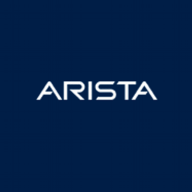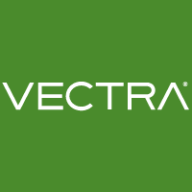

Vectra AI and Arista NDR are prominent competitors in the realm of network detection and response solutions. Vectra AI appears to have the upper hand due to its precise detection capabilities through AI-enabled filtering and triaging, which are highly praised in reducing alert fatigue.
Features: Vectra AI emphasizes detection precision with AI-enabled filtering and triaging, comprehensive attack lifecycle visibility, and risk-based threat prioritization. Arista NDR is known for its detailed traffic analysis, enriched security insights, and real-time enhanced visibility, coupled with its praised detailed reporting capabilities.
Room for Improvement: Vectra AI could benefit from better integration with third-party systems and improved management of complex host-driven threats. Enhancements for tracking multiple attack sources and better integrating host behavior analysis are needed. Arista NDR should expand its geographic presence and enhance engineering support, especially in underrepresented markets.
Ease of Deployment and Customer Service: Both Vectra AI and Arista NDR offer strong technical support. Vectra AI is recognized for its robust customer service structure, ensuring responsive support. Arista NDR is appreciated for its responsive customer service due to a close-knit support team, but might benefit from an expanded support infrastructure as the company grows.
Pricing and ROI: Vectra AI’s licensing is costly but seen as a valuable investment for enterprises focusing on threat detection. Arista NDR offers competitive pricing, making it a budget-friendly option, ideal for firms seeking cost-effective MDR service integration. Both solutions provide ROI by reducing incident response times and enhancing network security efficiency, though Vectra AI’s complex licensing may deter some customers.

Arista NDR (formerly Awake Security) is the only advanced network detection and response company that delivers answers, not alerts. By combining artificial intelligence with human expertise, Arista NDR hunts for both insider and external attacker behaviors, while providing autonomous triage and response with full forensics across traditional, IoT, and cloud networks. Arista NDR delivers continuous diagnostics for the entire enterprise threat landscape, processes countless network data points, senses abnormalities or threats, and reacts if necessary—all in a matter of seconds. The Arista NDP platform stands out from traditional security because it is designed to mimic the human brain. It recognizes malicious intent and learns over time, giving defenders greater visibility and insight into what threats exist and how to respond to them.
The Advent of Advanced Network Detection and Response & Why it Matters
Vectra AI is used for detecting network anomalies and potential malicious activities, providing visibility into network traffic and enhancing threat detection across environments.
Organizations deploy Vectra AI mainly on-premises with additional cloud components. It helps with compliance, incident response, security monitoring, detecting insider threats, and correlating network events. Vectra AI captures and enriches network metadata, provides detailed dashboards, reduces false positives, and supports cross-environment behavioral analysis to enhance threat detection and prioritization. While valued for its high accuracy and alert aggregation, it has room for improvement in UI/UX, packet management, and integration with SIEMs and other tools. It is noted for expensive pricing and limited proactive threat response features.
What are Vectra AI's most valuable features?In specific industries, Vectra AI is deployed to monitor complex networks and alleviate challenges in threat detection. It is particularly effective in sectors requiring stringent compliance and security measures, offering insights and capabilities crucial for protecting sensitive data and maintaining operational integrity.
We monitor all Network Detection and Response (NDR) reviews to prevent fraudulent reviews and keep review quality high. We do not post reviews by company employees or direct competitors. We validate each review for authenticity via cross-reference with LinkedIn, and personal follow-up with the reviewer when necessary.